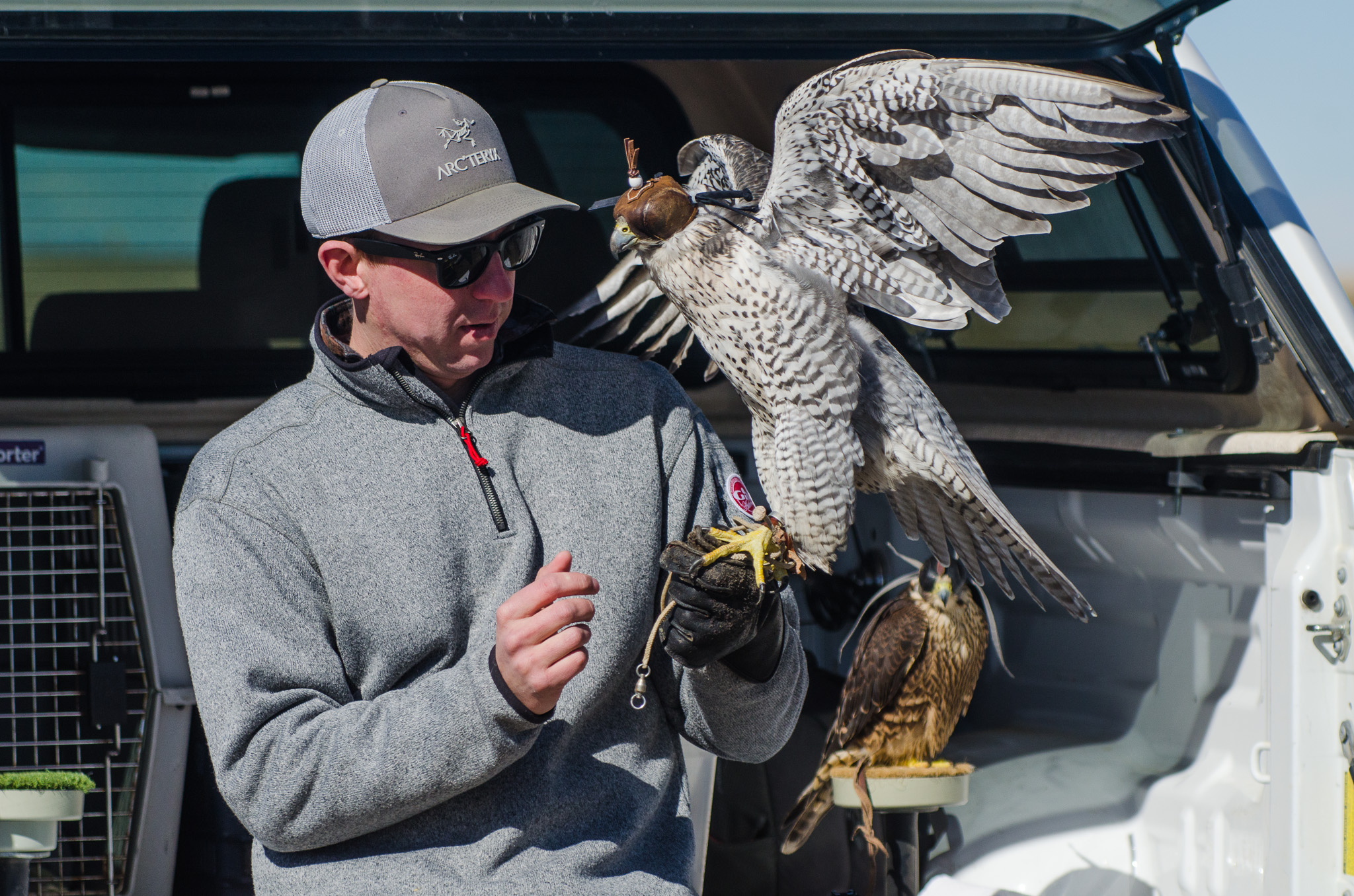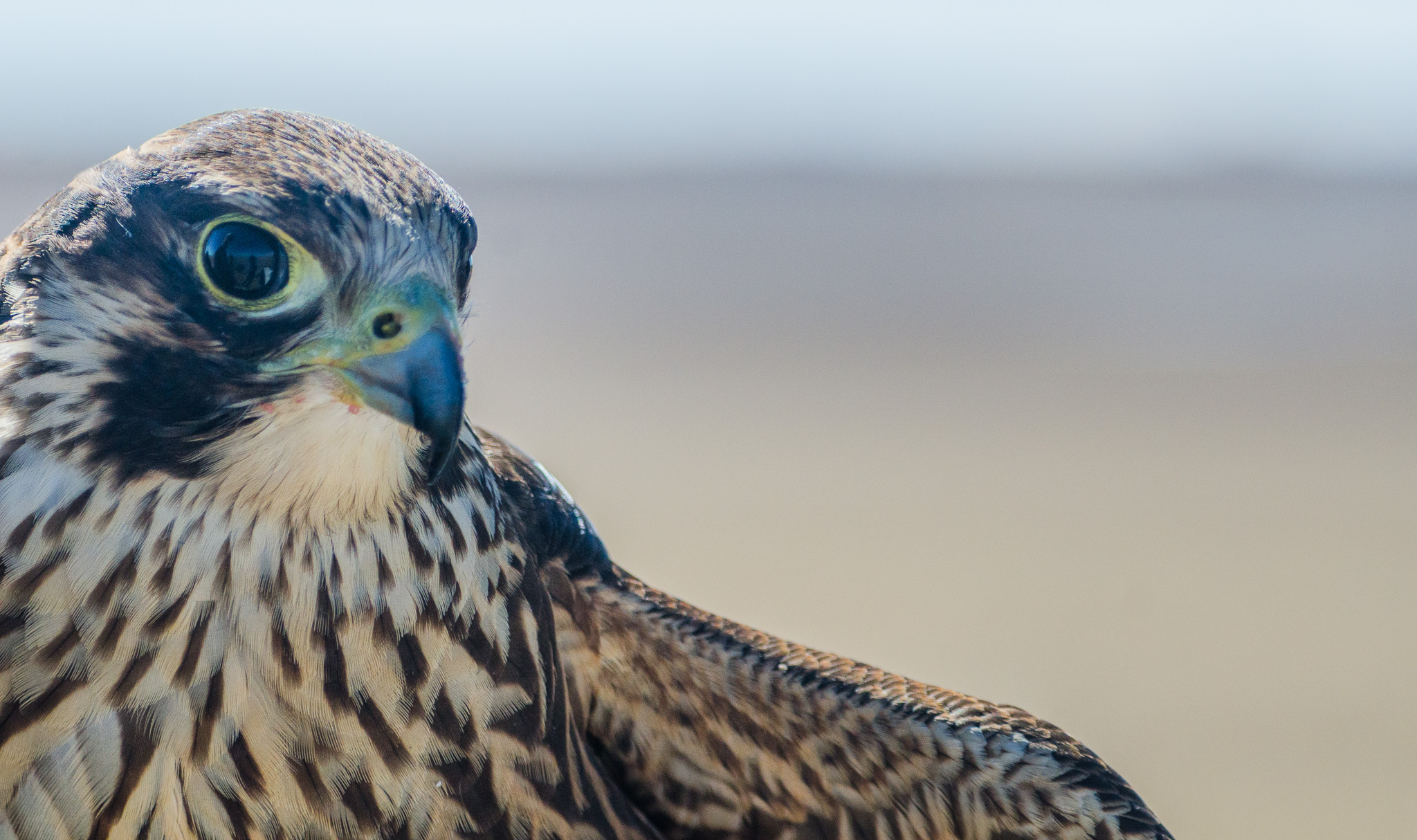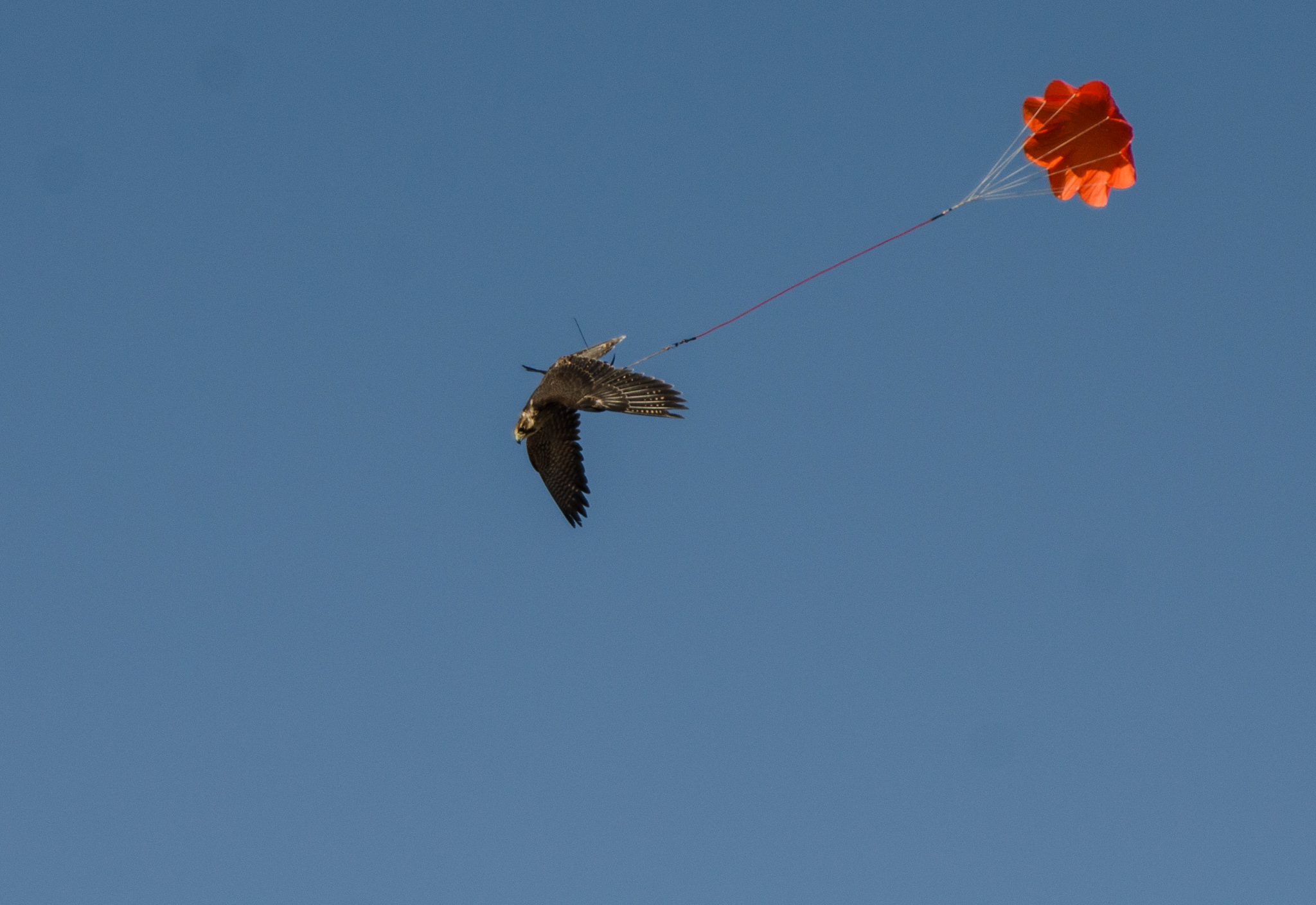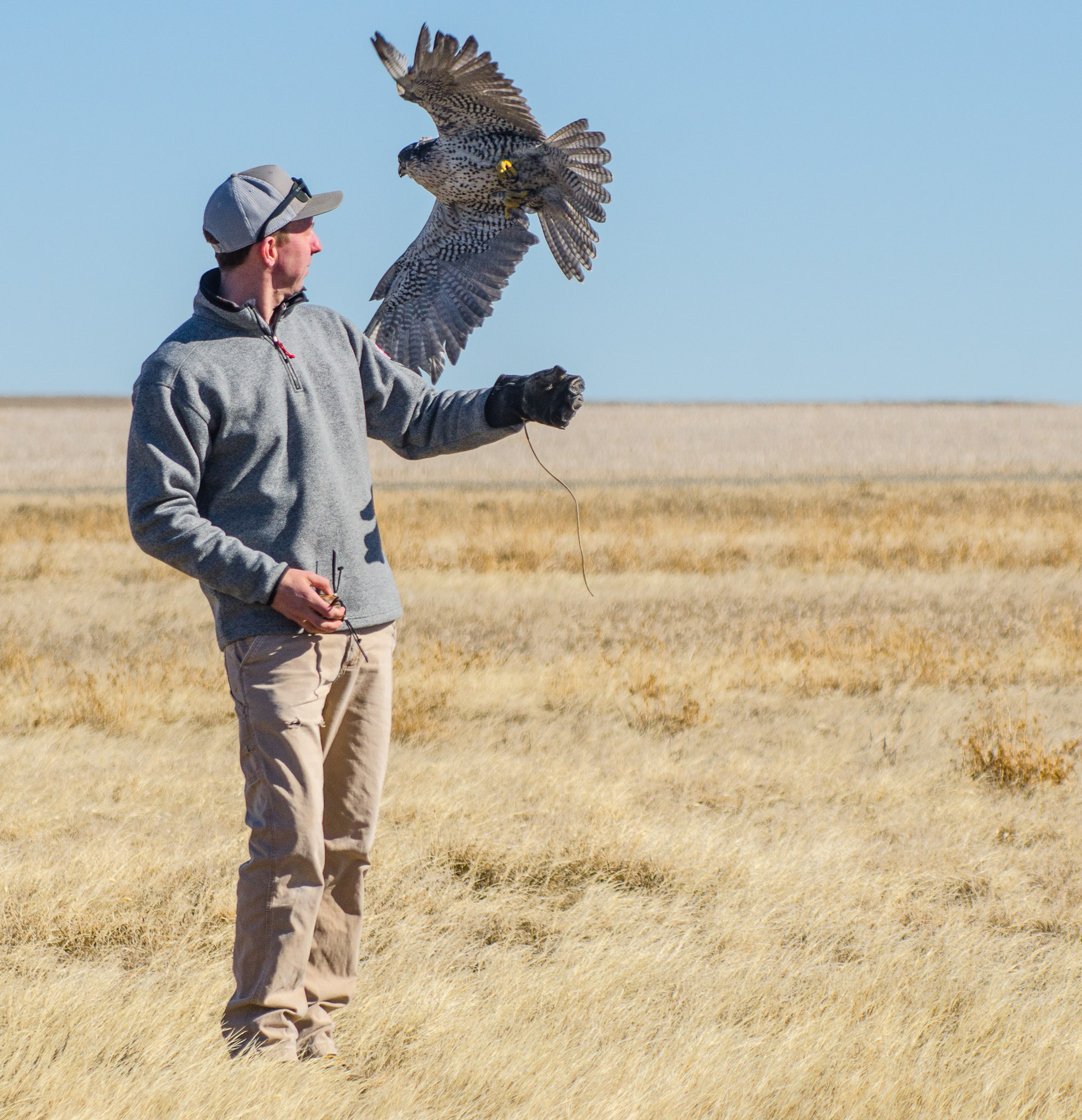Therapy Drones Are Helping Injured Falcons Fly Again
Credit to Author: Sarah Hewitt| Date: Thu, 31 Aug 2017 14:00:00 +0000
The gyrfalcon stretched out its wings and gave two powerful flaps, forcing its handler to duck out of the way. Leather ties kept the large grey falcon with a white speckled breast from flying off just yet. It settled back down, its powerful talons gripping Steve Schwartze’s gauntlet.
Schwartze is a professional falconer and wildlife consultant. Standing on the open prairie north of Lethbridge, Alberta, he loosened the bird’s jesses, the ties that tethered it to his wrist. This was a big day for the bird: It was going back to the wild after being found nearly dead one year earlier in a farmer’s field. For the past four months, Schwartze spent countless hours rehabilitating the injured falcon back to health with the help of a robotic physiotherapist—a drone.

These days, it’s not uncommon for falconers to use drones while training their birds, but rehabilitating wild birds is a different story.
Gordon Court, a Provincial Wildlife Status Biologist in Alberta, went to pick the bird up after a farmer noticed it walking in his field. When he arrived, the bird had an open wound and couldn’t fly because of a damaged shoulder—possibly from an earlier fight. “She’d been on the ground a long time and hadn’t eaten,” he told me. “I didn’t think she’d survive the first night.”
But the bird did, and Court eventually brought it to Schwartze. Wildlife rehabilitation centres usually end up caring for injured birds, but most centres understandably lack the time and expertise to use a drone to retrain them. Schwartze has the skill set—he uses a standard drone with four whirling blades to train his own birds, a peregrine falcon and a goshawk, and he successfully rehabilitated an injured peregrine last year. Schwartze put the gyrfalcon on a gruelling four-month exercise program.
Read More: Tracking Grizzly Bears With a Smartphone App in Northern Alberta
Gyrfalcons are the largest falcons in the world. They nest on cliff edges in the remote northern reaches of Canada and Alaska and are fierce predators, primarily of ptarmigan (a bird in the grouse family with feathered feet to help them walk in the snow). They’ll pursue their prey relentlessly across the tundra; they have tremendous aerobic capacity, like endurance athletes. One wrong, exhausted move by the pursued bird and the gyrfalcon slams into it, feet first, before carrying it to the ground to tear into it and start feeding.

Other raptors, like goshawks, live in forests and tend to fly low, maneuvering between branches with short, sprinter-like bursts of energy. So, just like athletes, different birds need tailored training regimens.
Schwartze used his own peregrine falcon to show me what the training looks like. He pulled out a detached, feathered wing from a bag in the back of his truck—”pigeon,” he told me. The rest of the pigeon was in his freezer back home to feed his peregrine later.
He tied the wing to one end of a six-foot-long weed whacker cord, which he said is less likely to get tangled or knotted than rope. At the other end of the cord was a small orange parachute, which he clamped to the underside of the drone. He flew the drone up into the sky, with the pigeon wing hanging down below. His falcon knew exactly what to do.

As soon as Schwartze removed the peregrine’s hood—the leather covering falconers use to hide the bird’s eyes and keep it calm—the bird leapt and flew up, chasing the drone and the fluttering wing, easily catching up. I watched the action through my camera’s viewfinder as Schwartze counted me down: “He’s gonna be there in 3, 2, 1…”
A conversation with falconer Steve Schwartze about the gyrfalcon he spent four months rehabilitating using a drone. Video: Sarah Hewitt/YouTube
In an instant, the peregrine snatched the dangling wing from the drone and didn’t let go. The parachute was yanked out of its mooring and then ballooned open so that the falcon, chute, and disembodied wing drifted down into the yellow stubble of the farmer’s field. “And that’s basically how it’s done,” said Schwartze.
With the injured gyrfalcon, he’d started off slowly. “When I took her out the first day she was so weak, she could barely get off the ground,” he said.
“Wow, I never thought that bird would fly again!”
He initially flew the drone low so that the pigeon wing dragged along the ground, enticing the bird to go after it. “She took to it immediately,” he said, “it was so natural for her.” As the bird gained strength, Schwartze would dangle the “prey” a little higher—a few feet off the ground. “Once they’ll take it in the air, you can double the altitude they’re going every day,” he explained, “so with a healthy bird, you’re up to 1,000 feet in very short order.”
It’s slower progress for an injured bird, but like a marathon runner working up to longer distances, he kept pushing the bird as high as it was capable of going.
“I made her do it over and over,” he said. “It’s hard work but when it comes to rehabilitation and physiotherapy, you can’t make progress by taking the easy route.”
Not all rehabilitation efforts are successful; birds that can’t return to their natural environment often end up in zoos. But Schwartze felt sure this bird had regained its strength and endurance so that it could hunt on its own—the benchmark of successful rehab.

Schwartze pointed out that this type of rehabilitation is time consuming and makes little difference to the overall population of the species. But for an individual, the concerted effort is the difference between a life of freedom and one in captivity.
After four months of steady training, and nearly a year after the original injury, the bird’s flight muscles were strong, it could fly high, and catch food on the wing. Schwartze felt this one was ready to go back to the wild.
Back on the prairie, the wind picked up and ruffled the gyrfalcon’s feathers. It was chilly for us, but these birds can handle temperatures as low as -50C. Schwartze removed the bird’s hood. The gyrfalcon looked around and then leapt off Schwartze’s gloved hand for the last time. It circled overhead once and twisted to look at us before flying off. It landed on a fencepost about a kilometre away. Court, who’d driven five hours to watch its release, shook his head and said, “Wow, I never thought that bird would fly again!”
Get six of our favorite Motherboard stories every day by signing up for our newsletter.